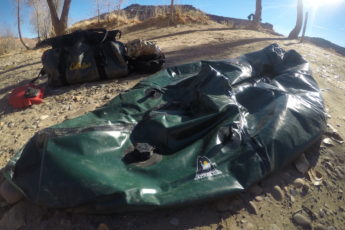Basic First Aid On The Trail: Altitude Sickness
How To Treat & Deal With Altitude Sickness On The Trail
This is one thing that may or may not apply to everyone equally and location is the largest factor to susceptibility. Altitude sickness works like this: the higher you go, the higher your odds of becoming sick. Pretty simple. It usually takes someone one to two weeks to acclimate to extreme differences in altitude based on what they are used to. If you go from say 500 ft to 5,400 feet you will require a period to acclimate. During the acclimation time, you will notice that you cannot exert the same amount of physical activity that you are used to.
Knowing how to recognize, what to do and how to treat altitude sickness is very important when altitude is changing at higher rates.
Preventing Altitude Sickness Before It Starts
Well, you can’t really prevent it ultimately. You can send time and acclimate but that may not completely mitigate your chances of getting altitude sickness. People become altitude sick due to thinner air containing less oxygen than they are used to. With less oxygen available, muscles and cells do not receive as much oxygen as they are used to getting. Extreme altitude sickness may evolve into Acute Mountain Sickness. AMS typically ends up in cerebral and/or pulmonary edema. This is when the brain or lungs become saturated with too much water, which is no bueno.
Steps you can take to reduce AS are pacing speed and movement, drinking more than enough fluids to keep the body hydrated and not eating too much food. It is advised to not drink any alcohol at all if AS is at all possible. You want to be as hydrated as possible here.
Treating Altitude Sickness Before It Becomes Bad
You may not be able to prevent this condition as much as other conditions. You can however treat this so that it doesn’t become worse or life threatening. First you need to recognize when someone is suffering from AS. Symptoms may include: breathlessness, headaches, nausea, dizziness or even insomnia. In more severe cases individuals may experience confusion, dry cough, vomiting or reduced coordination of movement and control.
The best way to prevent is to acclimate, or at least spend a few days if you feel symptoms at that altitude. When resting doesn’t defeat symptoms you need to get lower and start descending. Using supplemental oxygen is advised if you cannot do anything to feel better. When in doubt keep going lower and eventually get professional medical treatment to monitor symptoms.
In The End
In the end it comes down to not doing too much too quickly. Take you time to get used to the air and oxygen levels and avoid altitude sickness altogether. This amount of time will be different for each individual and should not be taken lightly. Remember when in doubt descend as quickly as possible and remain hydrated. If things are bad or get worse over a day or two get medical treatment immediately to prevent deteriorating conditions into AMS. Take care of yourself and those around you, be able to spot AS before it becomes a larger problem than a headache.



